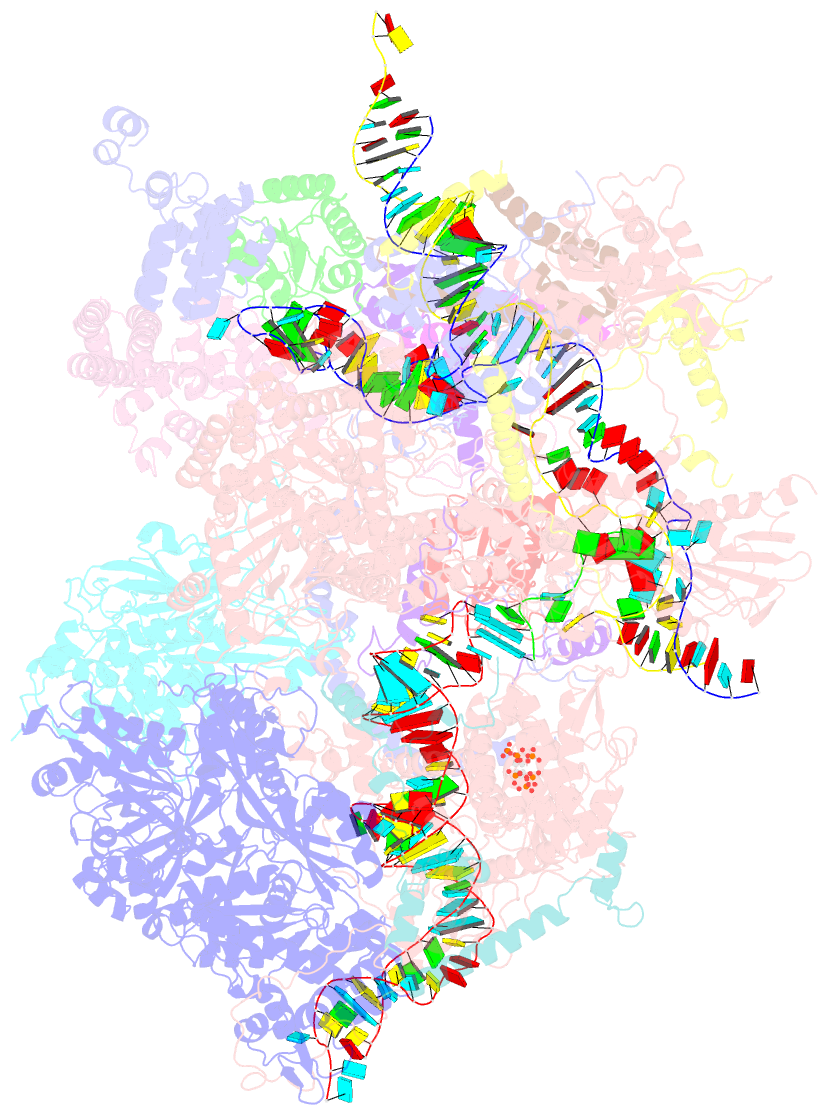Summary information and primary citation
- PDB-id
- 8qoz; SNAP-derived features in text and JSON formats;
DNAproDB
- Class
- splicing
- Method
- cryo-EM (3.1 Å)
- Summary
- cryo-EM structure of pre-b+5'ss+atpgammas complex (core part)
- Reference
- Zhang Z, Kumar V, Dybkov O, Will CL, Zhong J, Ludwig SEJ, Urlaub H, Kastner B, Stark H, Luhrmann R (2024): "Structural insights into the cross-exon to cross-intron spliceosome switch." Nature, 630, 1012-1019. doi: 10.1038/s41586-024-07458-1.
- Abstract
- Early spliceosome assembly can occur through an intron-defined pathway, whereby U1 and U2 small nuclear ribonucleoprotein particles (snRNPs) assemble across the intron1. Alternatively, it can occur through an exon-defined pathway2-5, whereby U2 binds the branch site located upstream of the defined exon and U1 snRNP interacts with the 5' splice site located directly downstream of it. The U4/U6.U5 tri-snRNP subsequently binds to produce a cross-intron (CI) or cross-exon (CE) pre-B complex, which is then converted to the spliceosomal B complex6,7. Exon definition promotes the splicing of upstream introns2,8,9 and plays a key part in alternative splicing regulation10-16. However, the three-dimensional structure of exon-defined spliceosomal complexes and the molecular mechanism of the conversion from a CE-organized to a CI-organized spliceosome, a pre-requisite for splicing catalysis, remain poorly understood. Here cryo-electron microscopy analyses of human CE pre-B complex and B-like complexes reveal extensive structural similarities with their CI counterparts. The results indicate that the CE and CI spliceosome assembly pathways converge already at the pre-B stage. Add-back experiments using purified CE pre-B complexes, coupled with cryo-electron microscopy, elucidate the order of the extensive remodelling events that accompany the formation of B complexes and B-like complexes. The molecular triggers and roles of B-specific proteins in these rearrangements are also identified. We show that CE pre-B complexes can productively bind in trans to a U1 snRNP-bound 5' splice site. Together, our studies provide new mechanistic insights into the CE to CI switch during spliceosome assembly and its effect on pre-mRNA splice site pairing at this stage.





